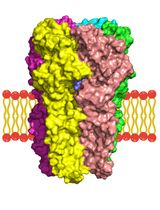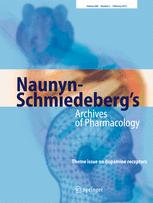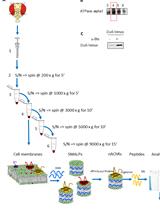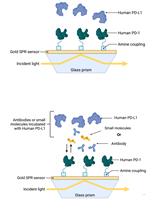- EN - English
- CN - 中文
[3H]-Spiperone Saturation Binding to Dopamine D2, D3 and D4 Receptors
[3H]-螺旋哌丁苯与多巴胺D2、D3 和D4受体的饱和结合
发布: 2013年10月20日第3卷第20期 DOI: 10.21769/BioProtoc.945 浏览次数: 10597
评审: Fanglian HeCheng ZhangAnonymous reviewer(s)

相关实验方案

膜蛋白–配体相互作用研究的计算流程:以含 α5 亚基的 GABA(A) 受体为例
Syarifah Maisarah Sayed Mohamad [...] Ahmad Tarmizi Che Has
2025年11月20日 1942 阅读
Abstract
This protocol is intended for use in 96 well plates (1,200 μl wells) but it can similarly be applied to standard test tubes (Levant, 2007). D2, D3, and D4 dopamine receptors are members of the D2-like class of dopamine receptors. They can be studied using the radioligand [3H]-spiperone, which is an antagonist binding to D2, D3, and D4 receptors with comparable affinity. A saturation assay can be used to determine the affinity of a radioligand to a receptor (Kd) and to determine the total number of receptors present in the assay (Bmax). If saturation binding experiments are performed in the absence and presence of a fixed concentration of another, not radiolabeled ligand, it can also be determined whether the other ligand acts in a competitive manner. If the specific radioactivity is low (tritiated) relative to the affinity of the radioligand (< 1 nM), a high assay volume (≥ 1 ml) is required to avoid ligand depletion; this is of particular importance if a receptor source with high expression density is used (e.g. expressed recombinant receptors). To obtain reliable estimates of these parameters at least 6 different concentrations of radioligand must be tested, but particularly when a receptor is first detected in a given tissue or cell type a greater number of concentrations are helpful. The incubation time and temperature are chosen to allow formation of equilibrium between association and dissociation with the receptor for both radioligand and competitor. Each experiment can be divided into different steps such as assay preparation, membrane preparation, incubation, filtration, counting of the samples and data analysis. To minimize experimental error all assays are performed at least in duplicate. Radioligand dilutions should be prepared to cover the desired concentration range. Optimally these concentrations should cover both the high range (corresponding to 5-10x Kd and hence saturation of the receptor) and the low range (around Kd), so that both Kd and Bmax can reliably be estimated without undue extrapolation. At each radioligand concentration total and non-specific binding should be determined; the agent used for the definition of non-specific binding (NSB) should be chemically (different family) and physically (avoid combination of two lipophilic compounds) distinct from the radioligand to avoid artifacts. For discussion of specific benefits of chosen assay conditions see van Wieringen et al. (2013) (copy can be obtained from the author).
Keywords: Dopamine (多巴胺)Materials and Reagents
- Radioligand [3H]-spiperone (e.g. PerkinElmer, catalog number: NET565250UC )
- Butaclamol (e.g. Sigma-Aldrich, catalog number: 55528-07-9)
- Receptor-containing membrane suspension
- Whatman GF/C filters (e.g. PerkinElmer, catalog number: 6005174 )
- Poly(ethyleneimine) solution (PEI) (e.g. Sigma-Aldrich, catalog number: 9002-98-6 )
- Scintillation cocktail (e.g. PerkinElmer, catalog number: 6013641 )
- Tris-HCl
- KCl
- CaCl2
- MgCl2
- Destilled water
- Assay buffer (see Recipes)
- Wash buffer (see Recipes)
- NSB solution (see Recipes)
- Radioligand solutions (see Recipes)
- Radioligand Dilutions (see Recipes)
Equipment
- 96 well plates (polysterene)
- Cell harvester (e.g. PerkinElmer)
- Ultra-Turrax® (IKA, model: 0001602800 ) or similar disperser
- Water bath
- Scintillation counter
Software
- Prism (Graphpad Software, San Diego, CA, USA) or similar
Procedure
文章信息
版权信息
© 2013 The Authors; exclusive licensee Bio-protocol LLC.
如何引用
Wieringen, J. V. and Michel, M. C. (2013). [3H]-Spiperone Saturation Binding to Dopamine D2, D3 and D4 Receptors. Bio-protocol 3(20): e945. DOI: 10.21769/BioProtoc.945.
分类
神经科学 > 感觉和运动系统
生物化学 > 蛋白质 > 相互作用 > 蛋白质-配体相互作用
您对这篇实验方法有问题吗?
在此处发布您的问题,我们将邀请本文作者来回答。同时,我们会将您的问题发布到Bio-protocol Exchange,以便寻求社区成员的帮助。
Share
Bluesky
X
Copy link











